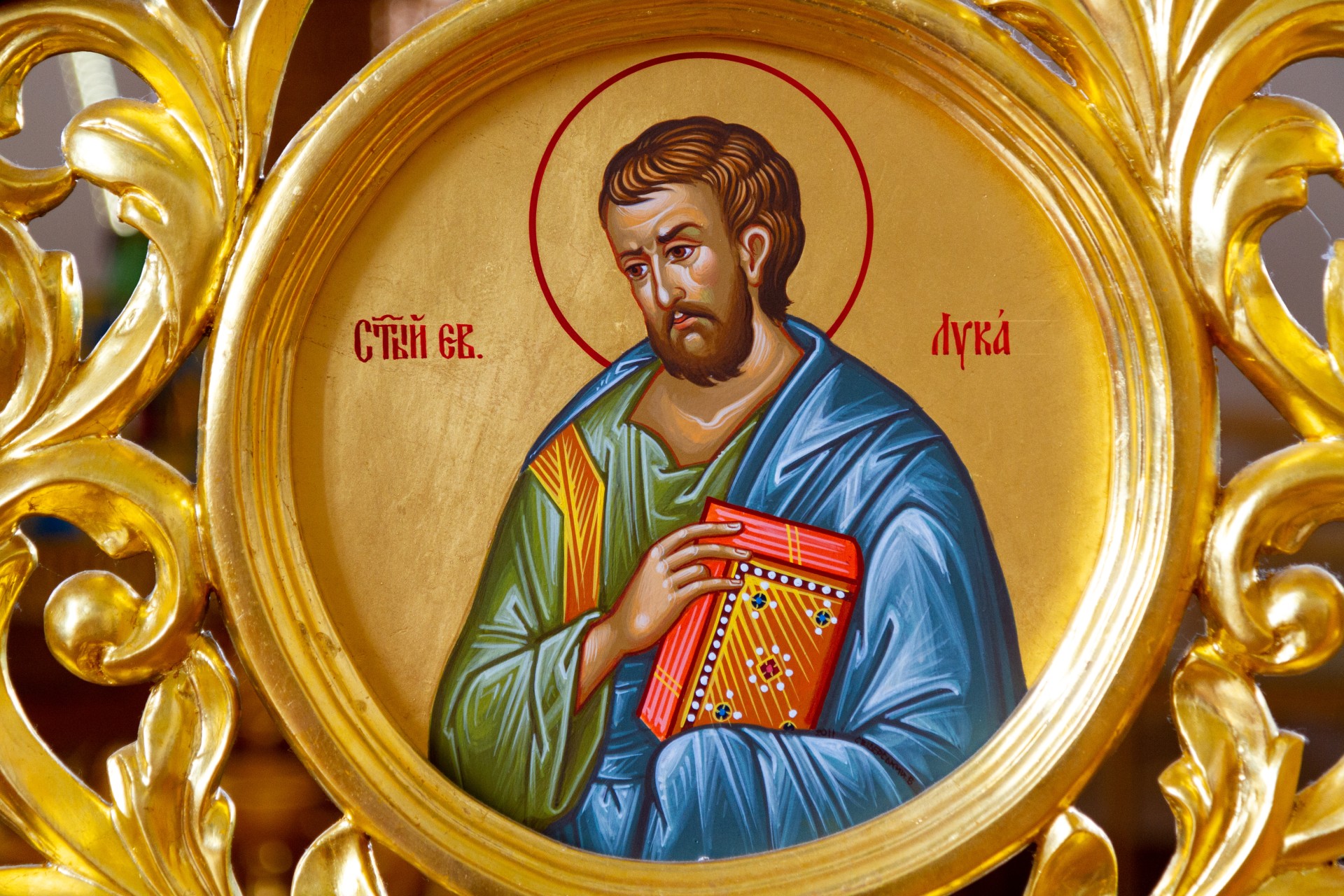
About our Patron Saint, Luke the Evangelist
Saint Luke, traditionally regarded as the author of the Gospel according to Luke and the Acts of the Apostles, was an early Christian writer and companion of the Apostle Paul. According to early sources such as Eusebius, Luke was likely born in Antioch, Syria, to a Greek family and trained as a physician. Saint Paul refers to him in his letters as “the beloved physician,” suggesting both professional skill and close personal friendship. Luke is believed to have joined Paul during his second missionary journey and remained with him during his final imprisonment in Rome.
Luke’s Gospel is widely recognized for its literary quality and theological depth. Written in polished Greek, it is considered the most stylistically refined of the four Gospels. Luke presents Jesus not only as the fulfillment of Jewish prophecy but as the Savior of all humanity, emphasizing themes of compassion, forgiveness and the universality of salvation. His writing also shows particular attention to the dignity of women, the marginalized and the poor, groups that play an important role in his accounts. His Gospel is notable for its focus on prayer, the work of the Holy Spirit and the joy of faith.
After Paul’s martyrdom, tradition holds that Luke continued to preach the Christian faith in regions of Greece. Ancient accounts differ on the circumstances of his death. Some state that he died peacefully in Boeotia at the age of 84, while others claim he was martyred for his faith. The oldest traditions suggest that he never married and devoted his later years to writing and ministry. His remains were said to have been transferred from Greece to Constantinople in the fourth century under Emperor Constantius, and later portions of his relics were distributed to various churches across Europe.
In addition to his contributions as a writer and missionary, Saint Luke’s Gospel preserves several accounts unique to his narrative, including the Annunciation, the Visitation, the Parable of the Good Samaritan and the story of the Prodigal Son. His writings emphasize mercy, inclusion and the universality of the Christian message. Scholars regard Luke’s attention to historical context and linguistic precision as valuable for understanding the development of early Christianity. Together, the Gospel of Luke and the Acts of the Apostles form a continuous narrative tracing the origins and expansion of the Christian movement from the birth of Christ to the early missionary efforts of the apostles.
Because of his background as a physician, Saint Luke is venerated as the patron saint of doctors and those in the medical field. He is also traditionally associated with the arts, as later traditions credited him with painting early depictions of the Virgin Mary and Christ. In Christian iconography, Luke is represented by the symbol of the winged ox, which signifies sacrifice, service and strength, qualities reflected in both his Gospel and his life of ministry.
Saint Luke was born between 1 AD and 16 AD, he is believed to have died between 84 AD and 100 AD. His feast day is celebrated on October 18.